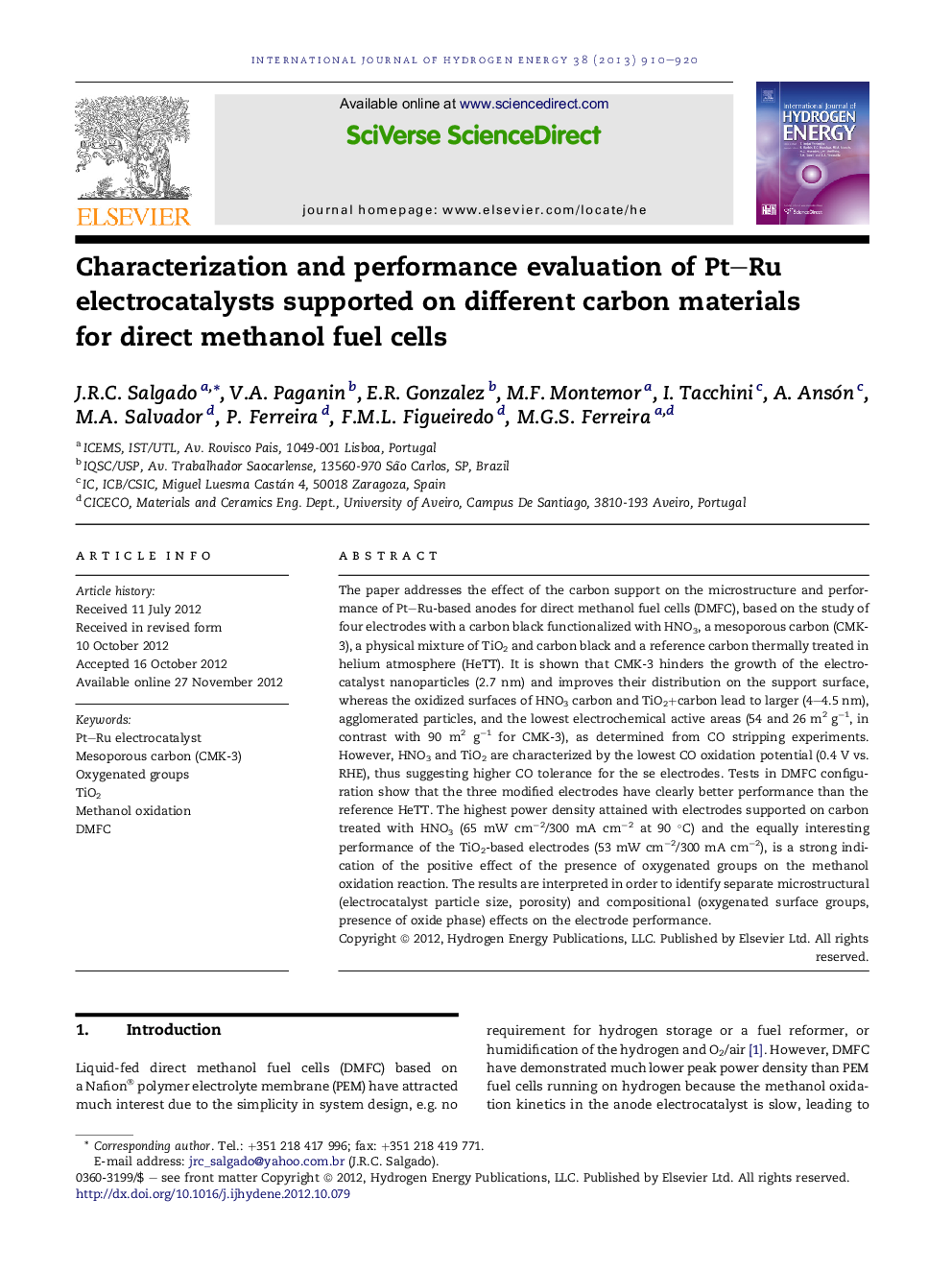| Article ID | Journal | Published Year | Pages | File Type |
|---|---|---|---|---|
| 1282057 | International Journal of Hydrogen Energy | 2013 | 11 Pages |
The paper addresses the effect of the carbon support on the microstructure and performance of Pt–Ru-based anodes for direct methanol fuel cells (DMFC), based on the study of four electrodes with a carbon black functionalized with HNO3, a mesoporous carbon (CMK-3), a physical mixture of TiO2 and carbon black and a reference carbon thermally treated in helium atmosphere (HeTT). It is shown that CMK-3 hinders the growth of the electrocatalyst nanoparticles (2.7 nm) and improves their distribution on the support surface, whereas the oxidized surfaces of HNO3 carbon and TiO2+carbon lead to larger (4–4.5 nm), agglomerated particles, and the lowest electrochemical active areas (54 and 26 m2 g−1, in contrast with 90 m2 g−1 for CMK-3), as determined from CO stripping experiments. However, HNO3 and TiO2 are characterized by the lowest CO oxidation potential (0.4 V vs. RHE), thus suggesting higher CO tolerance for the se electrodes. Tests in DMFC configuration show that the three modified electrodes have clearly better performance than the reference HeTT. The highest power density attained with electrodes supported on carbon treated with HNO3 (65 mW cm−2/300 mA cm−2 at 90 °C) and the equally interesting performance of the TiO2-based electrodes (53 mW cm−2/300 mA cm−2), is a strong indication of the positive effect of the presence of oxygenated groups on the methanol oxidation reaction. The results are interpreted in order to identify separate microstructural (electrocatalyst particle size, porosity) and compositional (oxygenated surface groups, presence of oxide phase) effects on the electrode performance.
► Pt–Ru on functionalized carbon presents the highest catalytic activity. ► Good performance is also observed by electrocatalysts supported on CMK-3. ► Pt–Ru electrocatalysts on the TiO2 support at 90 °C have a good performance. ► Pt–Ru alloy and the interaction of metals and oxygenated groups are important aspects.
